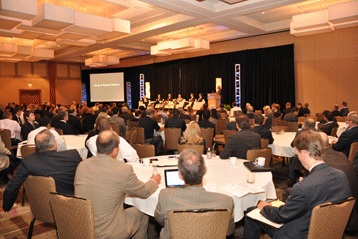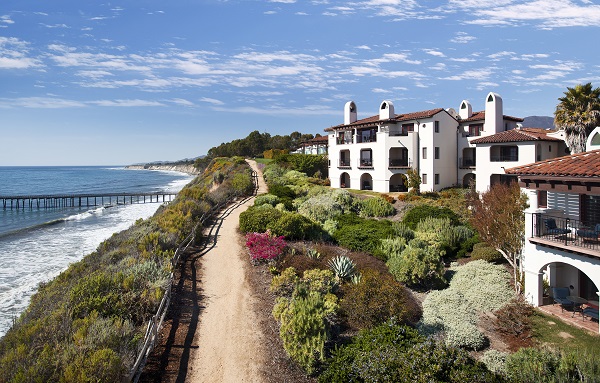 SBA, EB-5, tax credits, CMBS, private equity, regional banks, local banks. There is no shortage of financing for all kinds of hotel deals, including new construction. The trick for those looking for money is matching their acquisition, refinancing, repositioning or new development deal with the right source or sources of financing. That was a consensus opinion of a group of moneymen on a general session panel at this week’s Midwest Lodging Investors Summit in Chicago. According to the lenders, the story of hotel financing today has at least two parts. On the debt side, said panelist Neil Freeman of Aries Capital, money is available at low interest rates for up to 65% to 70% of a hotel’s value on cash-flowing assets in major or secondary markets tagged with good brands. “There’s plenty of capital for good operations, but when you veer away from solid brands and consistent cash flows, debt financing is much more opportunistic,” said Freeman, who’s chairman and CEO of Aries, which has financed nearly $1.5 billion in hotel deals in its nearly 30 years of business. Yet, some lenders like deals that are under the radar and may seem dicier to other groups. Firms like RockBridge, which works on both the debt and equity sides of hotel capital formation, looks for what Managing Director Chris Diffley called “story deals.” “In the top 10 markets especially, values are getting pushed to place where you’re not going to get paid appropriate to the risk in these deals,” said Diffley. “As a result, we look for opportunities on hotels that need turnaround or repositioning in order to get attractive returns.” Veteran dealmaker Michael Medzigian of Watermark Capital Partners agreed: “There is a long cycle ahead of us, and there are a lot of deals out there, especially on those hotels that are broken and need recapitalization and new equity.” The panel, which was moderated by Lodging Hospitality contributor and head of the Penn State hotel school John O’Neill, also explored the variety of alternative financing vehicles available to investors and developers. Included in that bucket are SBA and USDA financing, historic and new market tax credits, a variety of state subsidies, EB-5 financing and that old standby, CMBS. Even though hundreds of millions of dollars of CMBS hotel loans are troubled and heading to their maturity dates, Medzigian said the CMBS loan origination market is heating up again, and “it’s fairly aggressive,” providing mostly five-year but some 10-year loans. Most of the panelists shared anecdotes of projects they’ve worked on that included money in the EB-5 program, which is a way to attract foreign capital into real estate and other deals. Under the program, a $500,000 investment by a foreign national that results in 10 new jobs can earn the investor a U.S. immigration green card. As Bankers One Capital President and CEO Reginald Heard said, EB-5 money is available as both debt and equity, but because of the long cycle to source the money, it works best for new construction projects. Freeman discussed a hotel deal with many aspects of alternative financing. The $50-million transaction included about $20 million in federal historic and new market tax credits and some New York state subsidies. The senior debt came through EB-5 channels at a 5% interest rate.
SBA, EB-5, tax credits, CMBS, private equity, regional banks, local banks. There is no shortage of financing for all kinds of hotel deals, including new construction. The trick for those looking for money is matching their acquisition, refinancing, repositioning or new development deal with the right source or sources of financing. That was a consensus opinion of a group of moneymen on a general session panel at this week’s Midwest Lodging Investors Summit in Chicago. According to the lenders, the story of hotel financing today has at least two parts. On the debt side, said panelist Neil Freeman of Aries Capital, money is available at low interest rates for up to 65% to 70% of a hotel’s value on cash-flowing assets in major or secondary markets tagged with good brands. “There’s plenty of capital for good operations, but when you veer away from solid brands and consistent cash flows, debt financing is much more opportunistic,” said Freeman, who’s chairman and CEO of Aries, which has financed nearly $1.5 billion in hotel deals in its nearly 30 years of business. Yet, some lenders like deals that are under the radar and may seem dicier to other groups. Firms like RockBridge, which works on both the debt and equity sides of hotel capital formation, looks for what Managing Director Chris Diffley called “story deals.” “In the top 10 markets especially, values are getting pushed to place where you’re not going to get paid appropriate to the risk in these deals,” said Diffley. “As a result, we look for opportunities on hotels that need turnaround or repositioning in order to get attractive returns.” Veteran dealmaker Michael Medzigian of Watermark Capital Partners agreed: “There is a long cycle ahead of us, and there are a lot of deals out there, especially on those hotels that are broken and need recapitalization and new equity.” The panel, which was moderated by Lodging Hospitality contributor and head of the Penn State hotel school John O’Neill, also explored the variety of alternative financing vehicles available to investors and developers. Included in that bucket are SBA and USDA financing, historic and new market tax credits, a variety of state subsidies, EB-5 financing and that old standby, CMBS. Even though hundreds of millions of dollars of CMBS hotel loans are troubled and heading to their maturity dates, Medzigian said the CMBS loan origination market is heating up again, and “it’s fairly aggressive,” providing mostly five-year but some 10-year loans. Most of the panelists shared anecdotes of projects they’ve worked on that included money in the EB-5 program, which is a way to attract foreign capital into real estate and other deals. Under the program, a $500,000 investment by a foreign national that results in 10 new jobs can earn the investor a U.S. immigration green card. As Bankers One Capital President and CEO Reginald Heard said, EB-5 money is available as both debt and equity, but because of the long cycle to source the money, it works best for new construction projects. Freeman discussed a hotel deal with many aspects of alternative financing. The $50-million transaction included about $20 million in federal historic and new market tax credits and some New York state subsidies. The senior debt came through EB-5 channels at a 5% interest rate.


